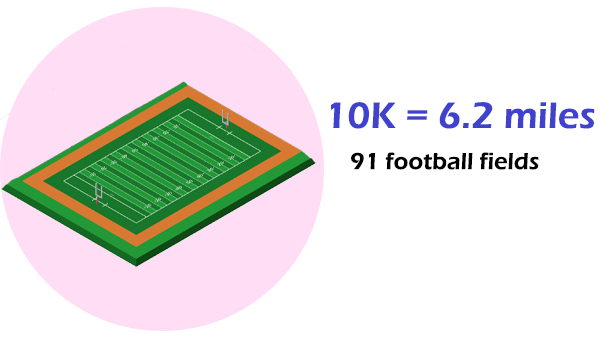Participating in a 10K race is a significant milestone for both novice and seasoned runners. It offers a balanced challenge—long enough to test endurance but short enough to remain accessible. In this comprehensive guide, we’ll delve into various aspects of the 10K race, including its history, training strategies, average completion times, and tips for achieving personal bests.
What is a 10K Race?
A 10K race is a road running event covering a distance of 10 kilometers, equivalent to 6.2 miles. The “K” stands for kilometers, a metric unit of length. This distance is popular among runners because it provides a substantial challenge without requiring the extensive training associated with longer races like half marathons or marathons.
Historical Context of the 10K Race
The 10K race has its roots in the early 20th century. Initially, road races varied in distance, but the 10K became standardized due to its balance between speed and endurance. Today, it stands as one of the most common race distances worldwide, attracting participants from all walks of life.
Average 10K Completion Times
Completion times for a 10K race can vary widely based on factors such as age, gender, experience level, and training. For recreational runners, average times typically range from 50 to 70 minutes. Elite athletes, however, can complete the distance in significantly less time.Running Matter – Run Wild, Run Far+1Runstreet+1Verywell Fit+1Running Matter – Run Wild, Run Far+1
Average 10K Times by Age and Gender:
- Men:
- Ages 18-29: Approximately 50 minutesRunning Matter – Run Wild, Run Far+5Verywell Fit+5Runner’s World+5
- Ages 30-39: Around 55 minutesVerywell Fit
- Ages 40-49: About 60 minutes
- Ages 50 and above: Varies, often between 65-75 minutes
- Women:
- Ages 18-29: Approximately 55 minutesVerywell Fit
- Ages 30-39: Around 60 minutesVerywell Fit
- Ages 40-49: About 65 minutes
- Ages 50 and above: Varies, often between 70-80 minutes
Note: These are general estimates. Individual times can vary based on numerous factors.
Training for a 10K Race
Proper training is essential to prepare for a 10K race, aiming to improve performance and reduce the risk of injury. A well-structured training plan typically spans 8 to 12 weeks and includes the following components:
- Base Building: Gradually increase mileage to build endurance.
- Speed Work: Incorporate interval training and tempo runs to enhance speed.
- Long Runs: Schedule weekly long runs to boost stamina.
- Rest and Recovery: Allow adequate rest to facilitate muscle recovery and adaptation.
- Cross-Training: Engage in activities like cycling or swimming to work different muscle groups and prevent burnout.SELF+2SELF+2The Healthy+2
For beginners, it’s advisable to start with shorter runs, gradually building up to longer distances. Consistency and gradual progression are key to a successful training regimen.
Nutrition and Hydration Strategies
Fueling your body correctly is vital for optimal performance:
- Carbohydrates: Provide energy for long runs.
- Proteins: Aid in muscle repair and recovery.
- Fats: Support prolonged energy needs.
- Hydration: Maintain fluid balance, especially during longer training sessions and races.
It’s recommended to consume a balanced meal 2-3 hours before running and to stay hydrated before, during, and after runs.
Mental Preparation and Race Strategy
Mental readiness is as important as physical training:
- Visualization: Practice visualizing the race course and your performance.SELF
- Pacing: Develop a pacing strategy to avoid starting too fast and burning out.
- Positive Self-Talk: Use affirmations to boost confidence and maintain motivation.
On race day, it’s beneficial to start at a comfortable pace, gradually increasing speed as you become more attuned to your body’s signals.
Common Mistakes to Avoid
To ensure a successful 10K experience, be mindful of the following:
- Overtraining: Avoid excessive mileage increases, which can lead to injury.
- Ignoring Rest: Rest is crucial for recovery and performance gains.
- Inconsistent Nutrition: Maintain a balanced diet to support training demands.
- Skipping Warm-Ups and Cool-Downs: These are essential to prepare the body for exercise and aid in recovery.
Conclusion
Embarking on a 10K journey is both rewarding and achievable with the right approach. By understanding the distance, committing to a structured training plan, fueling appropriately, and preparing mentally, you can approach the 10K race with confidence and enthusiasm. Remember, every runner’s journey is unique, so listen to your body, celebrate your progress, and enjoy the process.


0 Comments